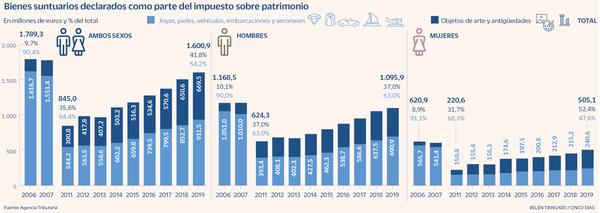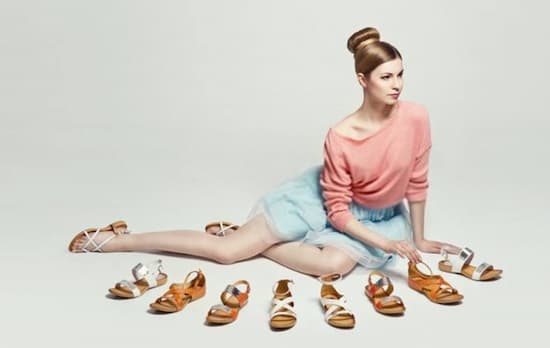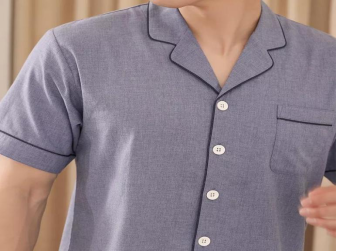Art gains weight in the total of luxury heritage assets
The Spanish declared the property of works of art and antiques worth 669.5 million euros in 2019. This is what emerges from the data related to the wealth tax recently published by the Tax Agency. The figure represents 41.82% of the total luxury goods declared, while the remaining 58.18% (931.5 million euros) corresponds to a more generic category that includes jewelry, furs, vehicles, boats and aircraft.
The amount of this type of goods has increased linearly since 2011, when luxury possessions worth 845 million euros were published, compared to 1,600.9 million euros in 2019. But art has grown in a greater proportion , since the value of what was declared has increased by 120% in eight years, while the rest of high-end products have increased by 71%. Thus, while, in 2011, works and antiques had a weight of 35.6% of total luxury goods, these now reach a relevance of 41.8%, according to the latest data published.
The progression is even more striking if the data for 2007 is observed, when luxury goods worth 1,551.4 million euros were declared, of which only 12.52% (222 million euros) corresponded to properties related to the art world. However, between 2008 and 2011 the formal obligation to file wealth tax was eliminated, so it is not possible to clearly analyze what happened in the years immediately after the crisis.
After recessions, there is a greater willingness to diversify investments. This is how Enrique del Río, founder and executive director of WeCollect, sees it: “Whenever there is an economic or financial crisis, investments are diversified into other assets.” A vision that Elisa Hernando, executive director of Arte Global and Red Collectors, agrees with. “Those who reach these figures do not do it merely for a matter of aesthetics. Of course they want something that they like, but they also look for something that can be revalued over time," says the expert, who recommends seeking advice to optimize investments. Likewise, Hernando also proposes the entry of new generations of consumers, thanks to the new digital platforms, as one of the possible causes of growth in properties.
More informationRemote online notarization (RON) is now permanent in Pennsylvania in accordance with the recently amended Revised U… https://t.co/WPE4HUBQhx
— Pennsylvania Association of Notaries Fri Nov 20 20:45:04 +0000 2020

The case of Madrid stands out, the only community in which art has more weight (57.76%) than the rest of luxury goods (42.24%). The community of Madrid is also the only one that has a 100% discount on wealth tax, so these properties are not taxed. But Hernando believes that the interest in the cultural sector goes beyond this. “Madrid is the region with the most art galleries. Even those that are in other areas are opening a second branch in Madrid. The fairs are also here and we are used to seeing art in a much closer way, ”says the expert, while she recalls that most of her clients are also in the capital.
On the other hand, among the reasons that could gradually cause the amount of declared luxury goods to fall, Cira Cuberes, a partner at Bain & Company, highlights the rental boom and the second-hand market for high-end products. “Although this segment is still small, it is growing a lot. There are things that we did not expect 20 years ago, such as boats being rented now, but it is happening. We see a trend towards making the industry more sustainable”, she sums up.
A fashion that, however, is not at odds with those who also see luxury as a field in which to invest. “If the high-end is characterized by something, it is its durability and sustainability, the latter, which is now essential in any industry, has always been in the DNA of luxury, and is something that the consumer values, now even more so. The quality means that the purchase of these products can be considered an investment, since with the passage of time they are revalued”, defends the president of Círculo Fortuny, Xandra Falcó.
gender gap
Data from the Tax Agency reveal a notable difference between the amount of luxury goods declared by men and women. They concentrate 68.5% of the value of these properties, while they hold the remaining 31.5%. One more evidence of the different purchasing power between the sexes. In the case of art, this gap is also notable, although slightly lower than the rest of the categories. “We work with young collectors, among whom we do not observe this difference. In Spain, in addition, there have been great female collectors. But we do still see a certain inequality when it comes to exhibiting”, admits Del Río.







